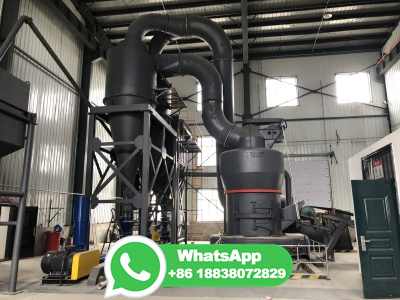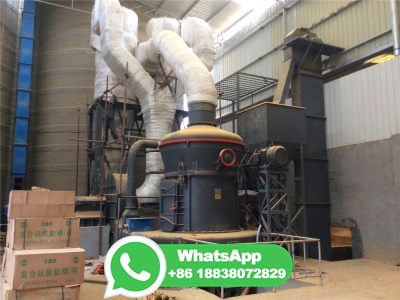Sand Ores Separation Process
Simply complete the form below, click submit, you will get the price list and a GBM representative will contact you within one business day. Please also feel free to contact us by Online Service. ( * Denotes a required field).
 Get Price >
Get Price >Heavy Media Separation
B. Mishra, G. Majumdar, in Reference Module in Materials Science and Materials Engineering, 2017 Extraction and Purifiion of Lithium. Flotation is primary used for mineral extraction from lithium ores. In this process, lithium ores are concentrated with respect to lithium oxide from 1–3% Li 2 O to 4–6% Li 2 O through heavy medium separation using dense nonaqueous .
 Get Price >
Get Price >Homepage
Likewise, the ore mining industry loses millions of tons a year of copper, lead, zinc, silver, and other valuable ores in throwaway tailings. MRC ANSWER Mineral Refining Company (MRC) has developed an innovative, patented process to economically recover ultrafine particles of coal and minerals that are currently disposed of as waste.
 Get Price >
Get Price >Extraction of Metals from Ores
Every constituent is analyzed and then the most suitable process of separating it from the rest is chosen. The basic extraction of metals from ores has the following steps. 1. Grinding and Crushing. The bigger chunks of the ore extracted are crushed and ground in ball mills and crushers. It helps to increase the surface area of the chunks for ...
 Get Price >
Get Price >Process Plants and Separation Systems Archives
Engineered Solutions and Equipment for Wet Mechanical Processing and Process Water Management allmineral Separation and Beneficiation Systems for Sand, Gravel, Ore, Coal, Lignite and Slag
 Get Price >
Get Price >CNA
The invention relates to a mineral separating process for electively recovering tantalumniobium ores; in the process, the crushed ores produce tantalumniobium ores finally after the steps of stage grinding, stage sorting, mudsand separation, and respectively processing primary mud and secondary mud; the process adopts stage grinding and stage sorting and avoids over .
 Get Price >
Get Price >Introduction Of Silica Sand Flotation Separation Process ...
In the actual beneficiation process, the selection of the silica sand flotation separation process is often determined by various factors such as the nature of the quartz sand ore, the processing plant conditions, and the investment budget. It is recommended that when making a selection, you should first understand the silica sand and stone ...
 Get Price >
Get Price >mineralsands
1. Suction dredging A dredge lifts the ore from the bottom of an artificial pond, created over low grade deposits to allow rapid movement of large amounts of sand, through a large suction pipe which carries it to a separating dredge continues to slowly advance across the pond while the clean sand tailings are spread behind the pond where they will be revegetated at a later date.
 Get Price >
Get Price >Mining and Extraction: Oxide Ores
The process used to treat sulfide copper ores begins at the mine site, where the copperbearing minerals are physically separated from the rest of the rock. The flow diagram below shows how the percentage of copper increases as the ore is refined, first physically by froth flotation, then chemically by smelting and finally electrolytic refining.
 Get Price >
Get Price >Metals and Nonmetals Extraction of metals class 10 ...
Concentration of ores is also known as enrichment of ores. Process of concentration depends upon physical and chemical properties of ores. Gravity separation, electromagnetic separation, froth flotation process, etc. are some examples of the processes which are applied for concentration of ores.
 Get Price >
Get Price >Oil Sands 101: Process Overview | Oil Sands Magazine
Sep 01, 2016 · PROCESS OVERVIEW. Petroleum products are produced from the oil sands through 3 basic steps: Extraction of the bitumen from the oil sands, where the solids and water are removed.; Upgrading of the heavy bitumen to a lighter, intermediate crude oil product.; Refining of the crude oil into final products such as gasoline, lubricants and diluents.; .
 Get Price >
Get Price >Phosphate Beneficiation
Phosphate Beneficiation. Background. Definition of "Beneficiation": This is the second step in the mining process, after removal of the ore from the ground. Beneficiation is the technical term describing the industrial process of mechanically separating minerals from each other.
 Get Price >
Get Price >Silica | Minerals Eduion Coalition
Description. Also called silica sand or quartz sand, silica is made of silicon dioxide (SiO 2 ). Silicon compounds are the most significant component of the Earth''s crust. Since sand is plentiful, easy to mine and relatively easy to process, it is the primary ore source of .
 Get Price >
Get Price >Basics of mineral processing
Jul 29, 2017 · The two main purposes for a grinding process are: • To liberate individual minerals trapped in rock crystals (ores) and thereby open up for a subsequent enrichment in the form of separation. 11. 11 • To produce fines (or filler) from mineral .
 Get Price >
Get Price >Introduction Of Silica Sand Flotation Separation Process
In the actual beneficiation process, the selection of the silica sand flotation separation process is often determined by various factors such as the nature of the quartz sand ore, the processing plant conditions, and the investment budget. It is recommended that when making a selection, you should first understand the silica sand and stone ...
 Get Price >
Get Price >iron sand separation from gold
How to Remove Gold from Ore | Sapling. Remove the gold from the sand by a process called cyanidation. A solution is added to the mix to dissolve the gold. Zinc dust is added to separate the gold from the solution. The gold is then put through a filter press, which separates it from the solution. Chat
 Get Price >
Get Price >separation and purifiion | chemistry | Britannica
separation and purifiion, in chemistry, separation of a substance into its components and the removal of impurities. There are a large number of important appliions in fields such as medicine and manufacturing. Since ancient times, people have used methods of separating and purifying chemical
 Get Price >
Get Price >Magnetic Separation in the Mining Industry
Apr 29, 2015 · Magnetic separation is most commonly used in the mining industry to separate "tramp ore," or unwanted waste metals, from the rest of the bulk material. Tramp ore typically consists of the manmade byproducts created by the mining process itself, such as wires from explosive charges, nuts and bolts, nails, broken pieces from hand tools such ...
 Get Price >
Get Price >The Process
The chloride process produces TiO2 products by reacting titanium ores with chlorine gas. Beneficiated Ilmenite (BI) is the raw material for the Pigment Production Plant. BI from Ilmenite Beneficiation Plant is chlorinated in the Chlorination Plant to produce Titanium Tetra Chloride (Tickle).
 Get Price >
Get Price >Ores and Minerals
This is called concentration of ores. Ores of highly, moderately, and low reactive metals are 1 st concentrated. This step is common for ores of all types of metals. It is carried out by various methods depending upon the nature of the ore. It is generally carried out by following 4 methods – Gravity separation . Froth floatation method
 Get Price >
Get Price >Mineral processing
Crushing, a form of comminution, one of the unit operations of mineral processing. In the field of extractive metallurgy, mineral processing, also known as ore dressing, is the process of separating commercially valuable minerals from their ores .













